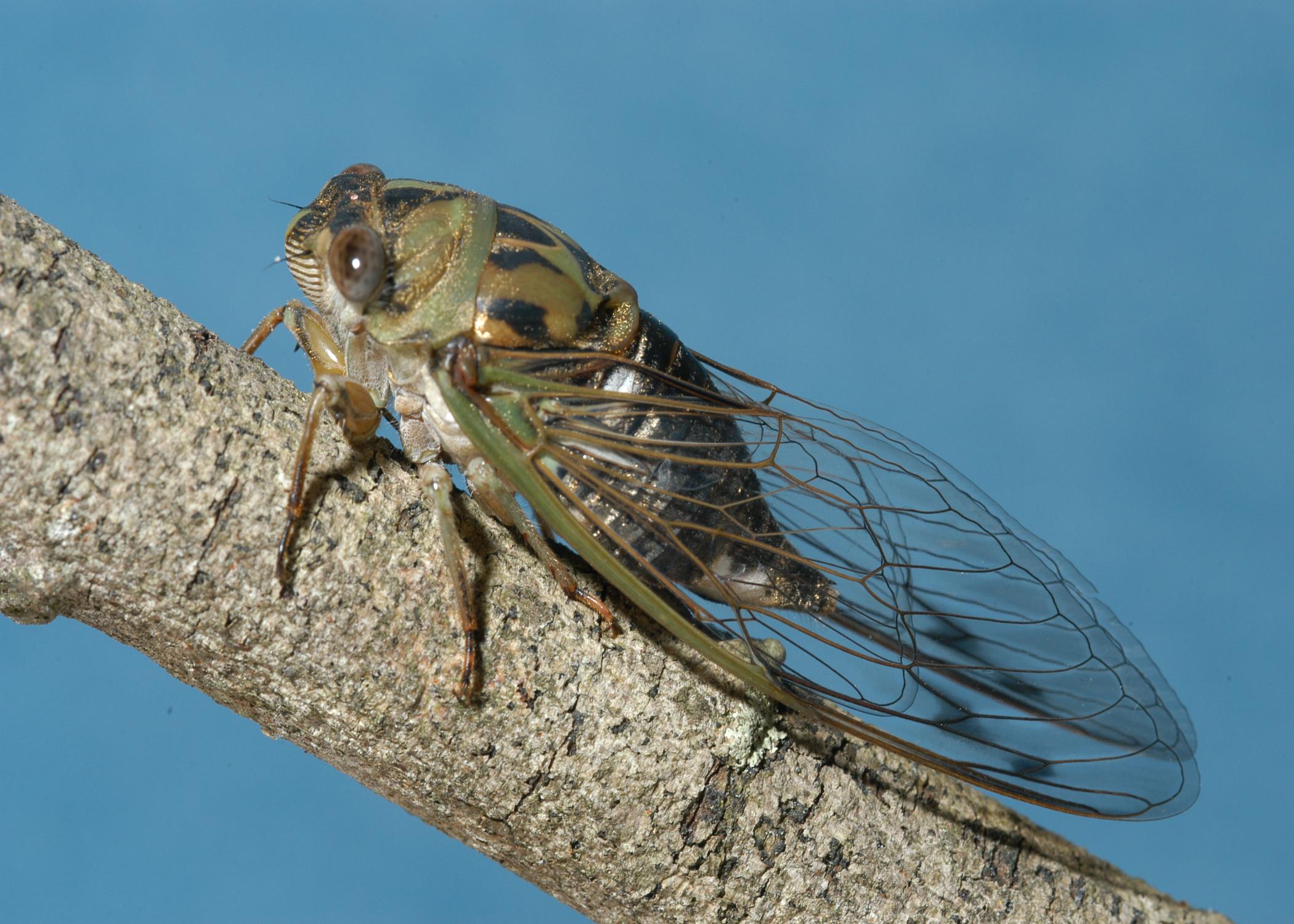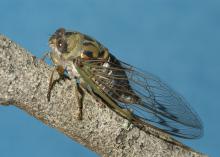Information Possibly Outdated
The information presented on this page was originally released on April 5, 2021. It may not be outdated, but please search our site for more current information. If you plan to quote or reference this information in a publication, please check with the Extension specialist or author before proceeding.
Cicadas emerge annually in Mississippi’s forests
STARKVILLE, Miss. -- Many states are expecting an extra loud chorus of chirping cicadas this summer with the emergence of a massive 17-year brood of the insects, but Mississippi will not be part of this phenomenon.
Cicadas are known for their loud song and the empty, tan husks they leave clinging to trees and structures as the nymphs emerge as adults. Mississippi is home to annual cicadas and three broods of 13-year cicadas. The 17-year cicadas will be seen in Indiana, Pennsylvania and parts of Georgia, Tennessee, Ohio, Maryland and nearby states.
Blake Layton, entomologist with the Mississippi State University Extension Service, said cicadas, whether annual or periodical, are noisy insects with short aboveground life spans.
“The young of cicadas are known as nymphs, and they feed on the roots of hardwood trees quietly underground for years,” Layton said. “They emerge through 1/2-inch holes in the ground, shed their nymphal skins and become adults to mate and lay eggs.”
The males are the noisy ones, singing as they try to attract mates. Adult cicadas live only a few weeks in their winged, aboveground form.
“Individual cicadas can sing pretty loud, but population densities can exceed 1 million cicadas per acre, and the combined songs of this many cicadas can drown out backyard conversations,” Layton said.
In Mississippi, annual cicadas begin appearing in June. Although they appear every year, they do not have a 1-year life cycle. Some live in pine forests, while other species are more common in hardwoods.
“Depending on the species, it takes 2 to 3 years or more for them to complete a generation, but the generations overlap so that some adults emerge every year,” Layton said.
Annual cicadas in Mississippi are winged and have greenish bodies and prominent, bulging eyes. Mississippi has 20 species of annual cicadas, mostly in the Tibicen genus, and their songs vary considerably.
Mississippi is also home to all three broods of 13-year periodical cicadas. The broods are given numbers. Brood XXII will emerge next in 2027, Brood XXIII in 2028 and Brood XIX in 2024.
These periodical cicadas in the Magicicada genus have black bodies and orange eyes, legs and wings.
Terry Schiefer, curator of the Mississippi Entomological Museum at MSU, said adult cicadas are completely harmless. The immature forms can do limited damage to trees.
“The nymphs of cicadas suck the sap from tree roots, which may weaken young trees, but annual cicadas are rarely numerous enough to cause appreciable damage,” Schiefer said. “The adult cicadas make slits in small branches of trees in which the females lay eggs. These branches often break and hang down in a condition known as ‘flagging.’”
Schiefer said this flagging causes little harm to older trees, but young trees can be weakened or killed if this damage is extensive. This level of damage only happens when large numbers of periodical cicadas are present.
Find a variety of information about annual and periodical cicadas at http://extension.msstate.edu/. This includes Bug’s Eye View newsletters http://extension.msstate.edu/newsletters/bug%E2%80%99s-eye-view/2015/annual-cicada-no-14
and http://extension.msstate.edu/newsletters/bug%E2%80%99s-eye-view/2015/periodical-cicadas-no-4.




